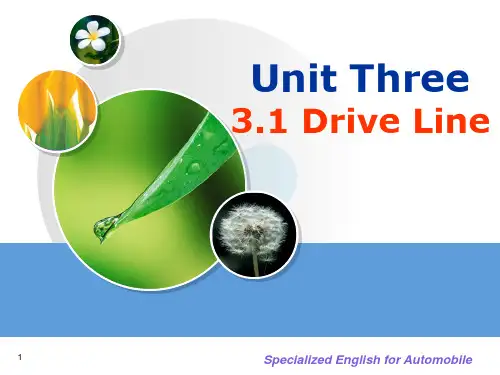新汽车专业英语读译教程 教学课件 宋进桂_ 4 u3ta
- 格式:ppt
- 大小:1.48 MB
- 文档页数:24
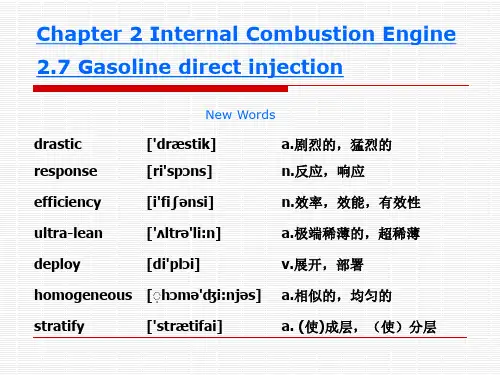
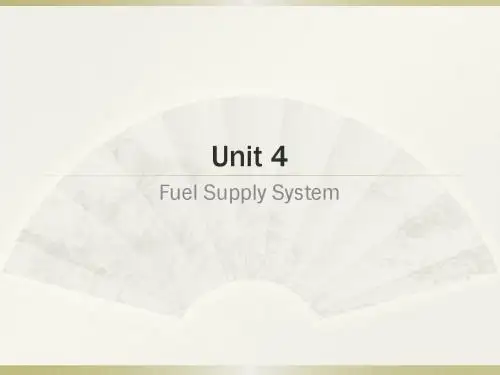
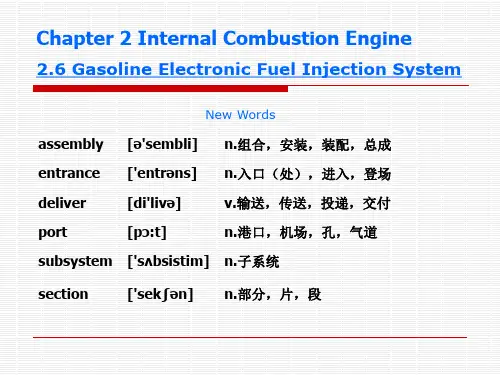

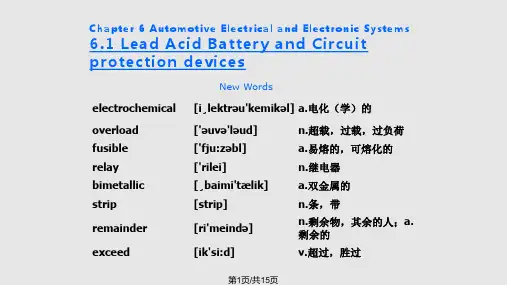
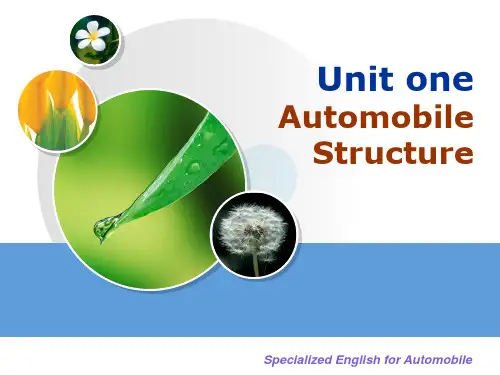
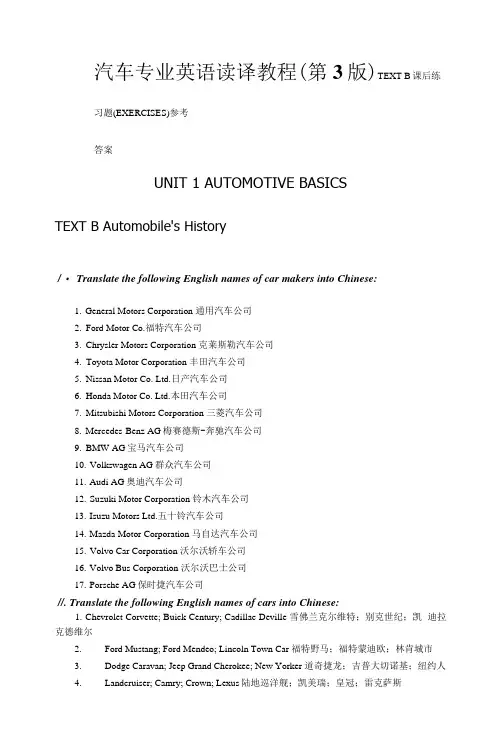
汽车专业英语读译教程(第3版)TEXT B课后练习题(EXERCISES)参考答案UNIT 1 AUTOMOTIVE BASICSTEXT B Automobile's History/ ・ Translate the following English names of car makers into Chinese:1.General Motors Corporation 通用汽车公司2.Ford Motor Co.福特汽车公司3.Chrysler Motors Corporation 克莱斯勒汽车公司4.Toyota Motor Corporation 丰田汽车公司5.Nissan Motor Co. Ltd.日产汽车公司6.Honda Motor Co. Ltd.本田汽车公司7.Mitsubishi Motors Corporation 三菱汽车公司8.Mercedes-Benz AG梅赛德斯-奔驰汽车公司9.BMW AG宝马汽车公司10.Volkswagen AG群众汽车公司11.Audi AG奥迪汽车公司12.Suzuki Motor Corporation 铃木汽车公司13.Isuzu Motors Ltd.五十铃汽车公司14.Mazda Motor Corporation 马自达汽车公司15.Volvo Car Corporation 沃尔沃轿车公司16.Volvo Bus Corporation 沃尔沃巴士公司17.Porsche AG保时捷汽车公司//. Translate the following English names of cars into Chinese:1.Chevrolet Corvette; Buick Century; Cadillac Deville 雪佛兰克尔维特;别克世纪;凯迪拉克德维尔2.Ford Mustang; Ford Mendeo; Lincoln Town Car 福特野马;福特蒙迪欧;林肯城市3.Dodge Caravan; Jeep Grand Cherokee; New Yorker 道奇捷龙;吉普大切诺基;纽约人ndcruiser; Camry; Crown; Lexus陆地巡洋舰;凯美瑞;皇冠;雷克萨斯1.What are the advantages of continuously variable transmission?Because there are no gears to tie a given road speed directly to a given engine speed, the CVT can vary the engine speed as needed to access maximum power as well as maximum fuel efficiency. This allows the CVT to provide quicker acceleration than a conventional automatic or manual transmission while delivering superior fuel economy.2.What are the main components of automated manual transmission?Transmission control ECU, clutch activator, transmission actuator, operators, and sensorsII. Translate the following paragraph into Chinese :The basic technical criteria for continuously variable transmissions are size, weight, transmission-ratio range, transfer efficiency, noise emissions and installation possibilities. With regard to these aspects, mechanical continuously variable transmissions, in the form of chain-driven transmission, have provided the best results so far.评判无级变速器的基本技术标准是尺寸、重量、传动比范围、传动效率、噪声排放和安装可能性。
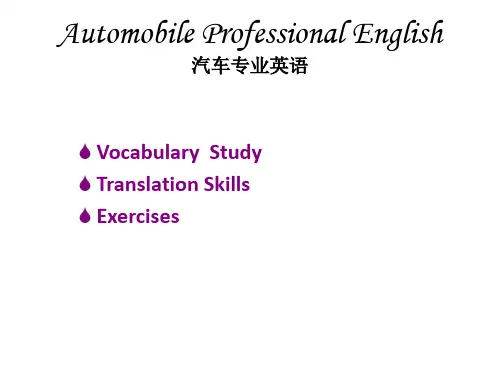
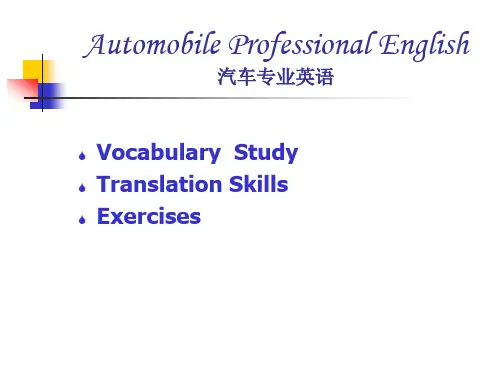
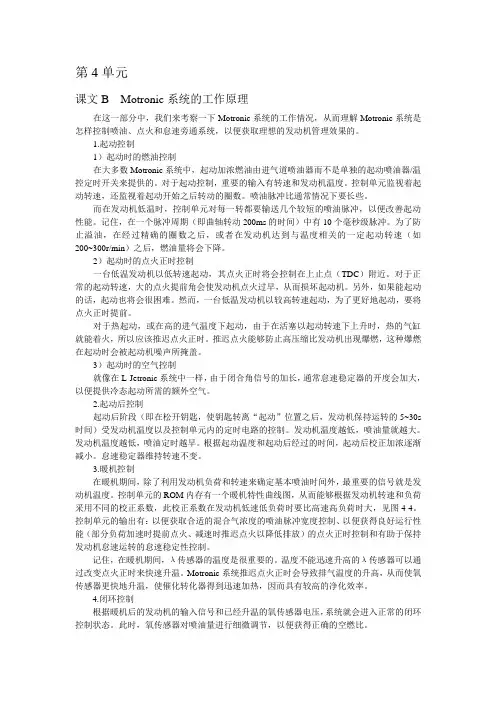
第4单元课文B Motronic系统的工作原理在这一部分中,我们来考察一下Motronic系统的工作情况,从而理解Motronic系统是怎样控制喷油、点火和怠速旁通系统,以便获取理想的发动机管理效果的。
1.起动控制1)起动时的燃油控制在大多数Motronic系统中,起动加浓燃油由进气道喷油器而不是单独的起动喷油器/温控定时开关来提供的。
对于起动控制,重要的输入有转速和发动机温度。
控制单元监视着起动转速,还监视着起动开始之后转动的圈数。
喷油脉冲比通常情况下要长些。
而在发动机低温时,控制单元对每一转都要输送几个较短的喷油脉冲,以便改善起动性能。
记住,在一个脉冲周期(即曲轴转动200ms的时间)中有10个毫秒级脉冲。
为了防止溢油,在经过精确的圈数之后,或者在发动机达到与温度相关的一定起动转速(如200~300r/min)之后,燃油量将会下降。
2)起动时的点火正时控制一台低温发动机以低转速起动,其点火正时将会控制在上止点(TDC)附近。
对于正常的起动转速,大的点火提前角会使发动机点火过早,从而损坏起动机。
另外,如果能起动的话,起动也将会很困难。
然而,一台低温发动机以较高转速起动,为了更好地起动,要将点火正时提前。
对于热起动,或在高的进气温度下起动,由于在活塞以起动转速下上升时,热的气缸就能着火,所以应该推迟点火正时。
推迟点火能够防止高压缩比发动机出现爆燃,这种爆燃在起动时会被起动机噪声所掩盖。
3)起动时的空气控制就像在L-Jetronic系统中一样,由于闭合角信号的加长,通常怠速稳定器的开度会加大,以便提供冷态起动所需的额外空气。
2.起动后控制起动后阶段(即在松开钥匙,使钥匙转离“起动”位置之后,发动机保持运转的5~30s 时间)受发动机温度以及控制单元内的定时电路的控制。
发动机温度越低,喷油量就越大。
发动机温度越低,喷油定时越早。
根据起动温度和起动后经过的时间,起动后校正加浓逐渐减小。
怠速稳定器维持转速不变。
